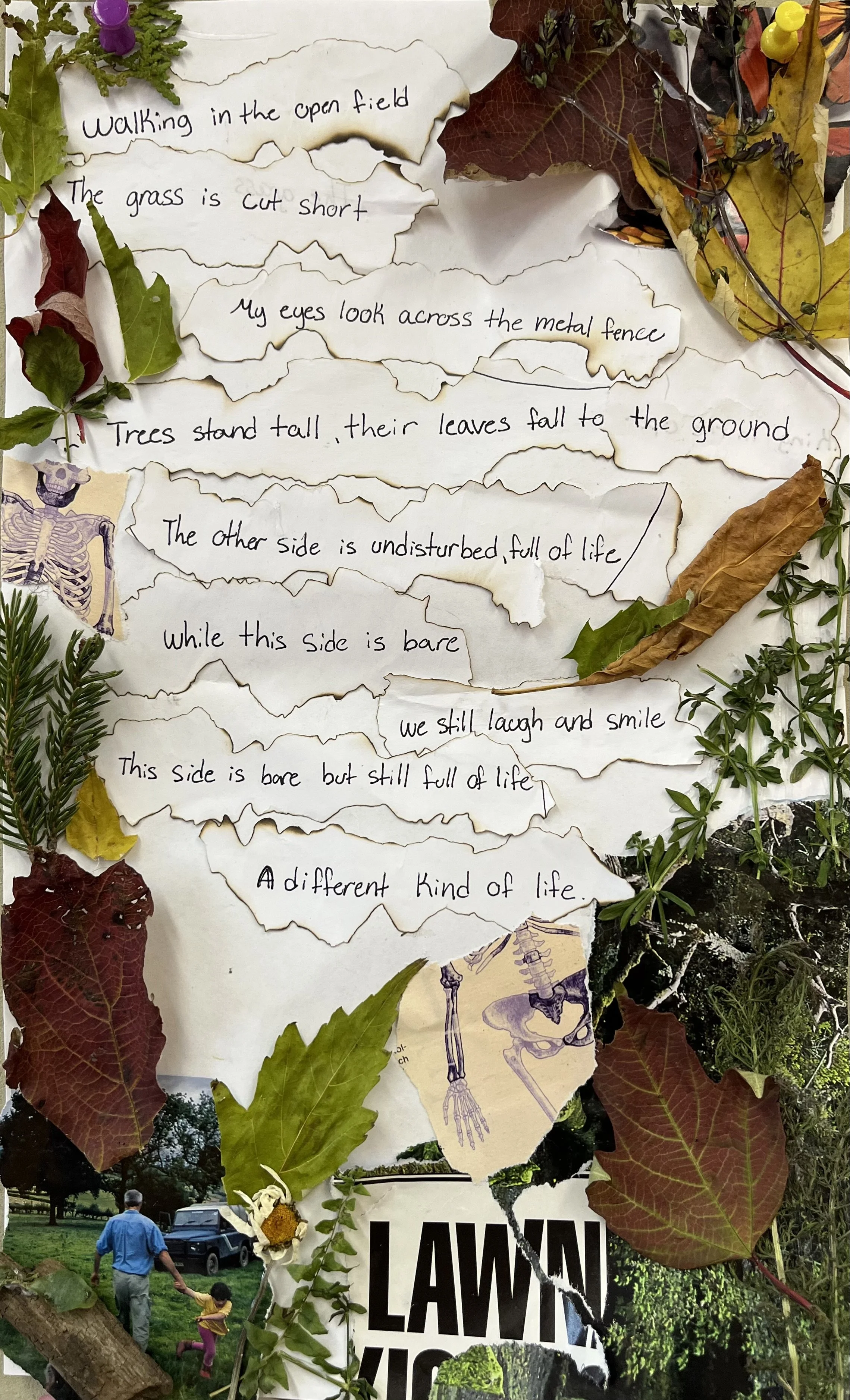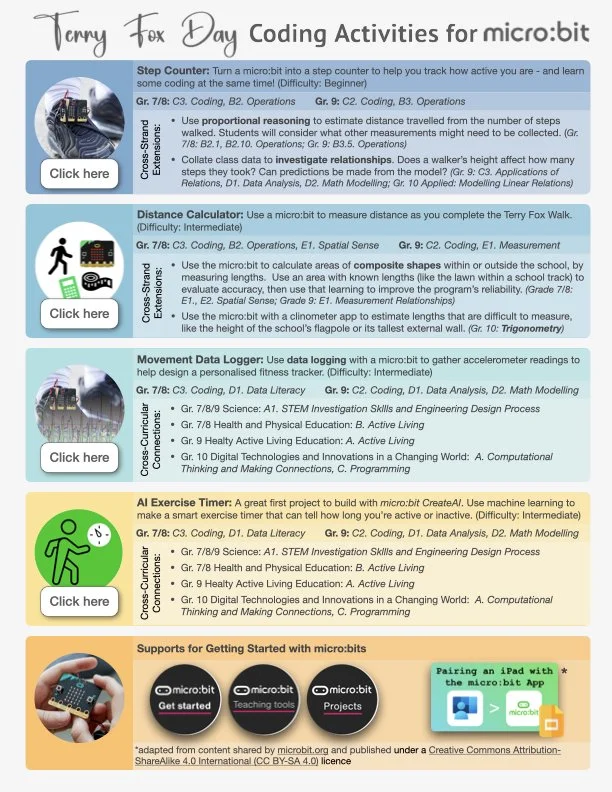
Mathematical Representations Deepen Understanding
The grade 5/6 class at Federal Public School is learning to represent and operate with decimal numbers in different ways. They were challenged to select an appropriate and efficient representation for solving the problem of the lesson.

From Land to Language
Students in Mrs. Kearns’ ENG2D/2P and NBE3U classes at ESCHS took their learning outdoors, exploring the land to gather inspiration and natural artifacts to compose poems reflecting on the theme of touched versus untouched land. To deepen the meaning of their compositions, students transformed their collected artifacts into creative collages that complemented their writing.

Resource Highlight: Virtual STEM Storytime: National Day for Truth and Reconciliation
Virtual STEM Storytime 1:00PM, September 30, 2025
National Day for Truth and Reconciliation
During this live storytime session suitable for K-3 students, Elder Dr. Albert Marshall and Louise Zimanyi will read their co-authored story, Walking Together. Afterwards, they’ll discuss the teachings in the book, then guide students through a hands-on poster craft, advocating for the plants and animals in the story.

Resource Highlight for Terry Fox Day: micro:bit Coding Activities
Grade 7 to 10 students can turn micro:bits into activity trackers and distance calculators with this set of coding challenges. Explore four ready-to-use activities, complete with starter resources, and discover extension ideas that connect to proportional reasoning, measurement, algebraic relationships, and even trigonometry!

Virtual Summer Symposium
DSB1 is excited to host a one-day Virtual Summer Symposium on Wednesday, August 27th, 2025 — and you’re invited!
We’ve lined up an amazing variety of sessions, including guest speakers, practical workshops, and creative learning opportunities to spark your curiosity and energize your teaching!
Check out the full session menu and pick your favourites.
Don’t miss out — register by noon on Friday, June 21st!
Just fill out this quick Google Form to save your spot.

Writing Code to Model Mathematical Problems
Students at Timmins High & Vocational School are applying computational thinking to deconstruct mathematical problems. They are creating flowcharts and writing pseudocode to represent algorithmic processes, modelling how a computer processes and stores information from user-defined inputs, then outputs that information as instructed by the programmer.

Morphology in Grade 7 & 8
Grade 7 and 8 students at Diamond Jubilee Public School and Cochrane Public School had fun using morphological concepts to build words on whiteboards or using the FreeForm App. They explored how the meaning of words change depending on what prefix and/or suffix they add to a root and students made connections to familiar words to help generalize their understanding.

Supporting Mental Health in Your Classroom
Visit the Tiered Mental Health Supports where you’ll find grade-appropriate educator guides, classroom modules, toolkits and much more.

Using Keynote to Create Cree Language Dictionaries
Students in Mrs. Ingram-Paquette's grade 6/7 Cree Language class at Diamond Jubilee Public School in Kapuskasing, got creative with Keynote and the Omushkego Cree app. They made their own visual and auditory dictionaries in Cree! Using Keynote, students integrated animations and employed the audio recording feature to present and communicate numbers they learned in Cree by consulting the Omushkego Cree app.




